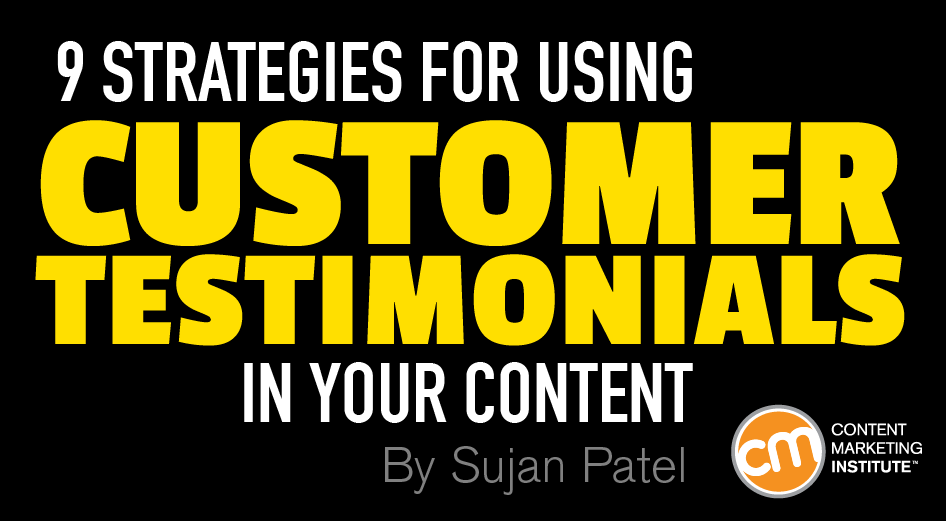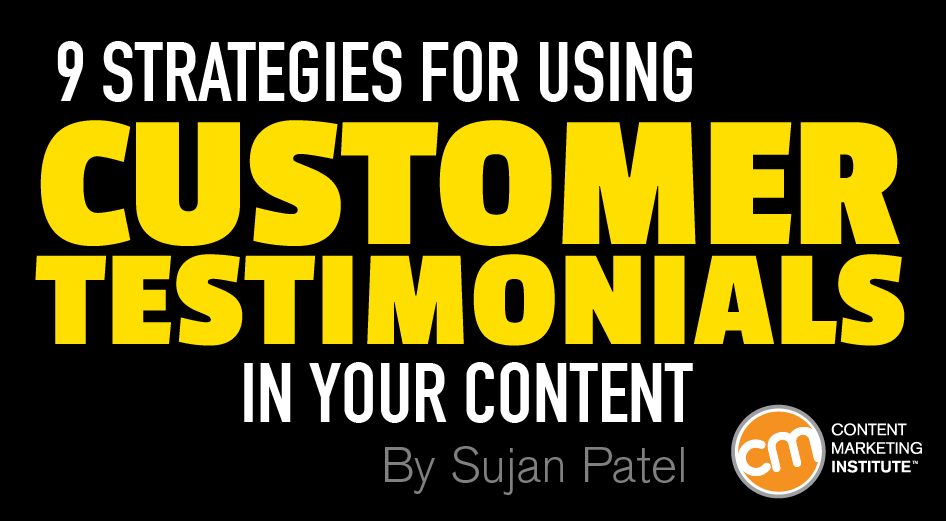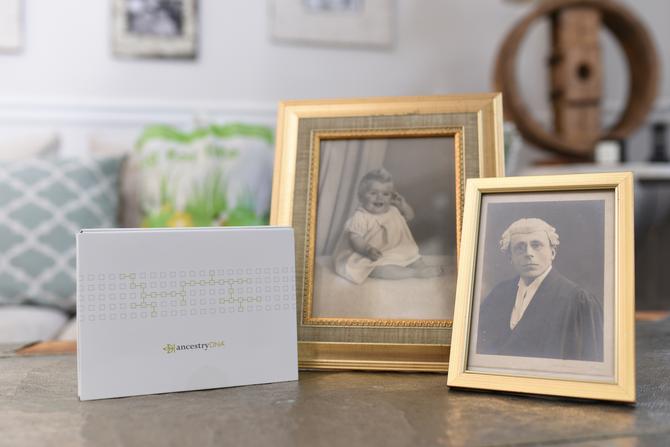
9 Strategies for Using Customer Testimonials in Your Content
9 Strategies for Using Customer Testimonials in Your Content https://csuiteold.c-suitenetwork.com/wp-content/uploads/2017/07/9-strategies-for-using-customer-testimonials-in-your-content.png 946 521 C-Suite Network https://csuiteold.c-suitenetwork.com/wp-content/uploads/2017/07/9-strategies-for-using-customer-testimonials-in-your-content.png
We look for and act on (even if subconsciously) social proof in all areas our life – including how we behave and the purchasing decisions we make online.
It doesn’t matter if that social proof comes from friends or strangers. What matters is that we’re seeing evidence from our peers – in this context, other consumers – that the decision we’re about to make is the right one.
As OptinMonster, co-founded by Syed Balkhi, writes:
Social proof is a psychological phenomenon where people conform to the actions of others under the assumption that those actions are reflective of the correct behavior.
In fact, according to Nielsen research, “92% of people will trust a recommendation from a peer, and 70% of people will trust a recommendation from someone they don’t even know.”
These recommendations can come in many forms. Word-of-mouth and third-party reviews come to mind, as well as what I’m focusing on in this article – testimonials.
Testimonials are a type of review and social proof. They serve the same purpose (guiding potential customers and helping overcome objections), but they’re different in one big way: Testimonials are sought and selected by you. This means you have full control over which testimonials are used, as well as where and how they are displayed.
We’ll look at ways to leverage testimonials in your content and other marketing materials; but first, let’s talk about how to get them and present them for maximum impact.
Getting and crafting testimonials
The only way to get testimonials is to ask for them – but how?
Randomly contacting customers to request a testimonial can work only to an extent. For best results, implement a system that allows you to request and receive testimonials at scale.
Follow up with recent customers
Your product or service will be fresh in the minds of your recent customers so this is a great time to ask them what they think of their experience.
Bear in mind that recent customers are only going to be able to comment on their experience with you up to this point. This isn’t a bad thing. Securing testimonials from customers at all stages of their relationship can help you address and overcome a wider range of objections.
Use drip campaigns to automatically send emails to recent customers after a set time to secure their testimonial.
Follow up again later
Expand those same drip campaigns to send emails to two groups of customers:
- Customers who didn’t respond to your initial email – Perhaps they hadn’t yet formed a solid opinion of your product or service and will be more receptive to a request for a testimonial later down the line.
- Customers who replied to your initial email with a testimonial – You know they’re receptive to your requests, so why not ask them for another testimonial now that they’re better acquainted with your product or service?
Approach your best customers individually
You know your best customers are going to give you a great testimonial. Better yet, the simple act of reaching out to them personally will strengthen their relationship with you and your brand. It’s a huge win-win all around.
Ask the right questions
Don’t just ask for “a testimonial.” Ask product- or service-specific questions that guide your customers toward writing testimonials that aren’t just complimentary but informative and inspirational as well.
Ideally, aim to extract examples of how your product or service has benefited them. You can do this by asking questions like:
- How much money did our product save you?
- How much time does our product save you each day/week/month?
- What’s the biggest benefit you’ve seen as a result of using our product?
Design great testimonials
We know that a great testimonial should include specific product or service details, but what does this really mean?
It means that vague statements like “great product” or “love it” don’t cut it. Instead, your testimonials should describe what is so great about your product or service and how it benefited your customers.
Remember, too, that you don’t have to use testimonials in the exact format you receive them. Edit spelling or grammatical errors and feel free to paraphrase if it helps focus your message and maximize impact. Just be sure to send any significant changes back to the customer for approval before publishing the testimonial.
Include these elements in a testimonial
Alongside the testimonial itself, include a name, date, and photograph of the customer who provided it. If possible, include a link to the customer’s website. This information all serves to help legitimize the testimonial. After all, which of these would you trust more?
These?

Or these?

Now that you know how to collect testimonials and how to present them for maximum impact, let’s look at nine ways to…






